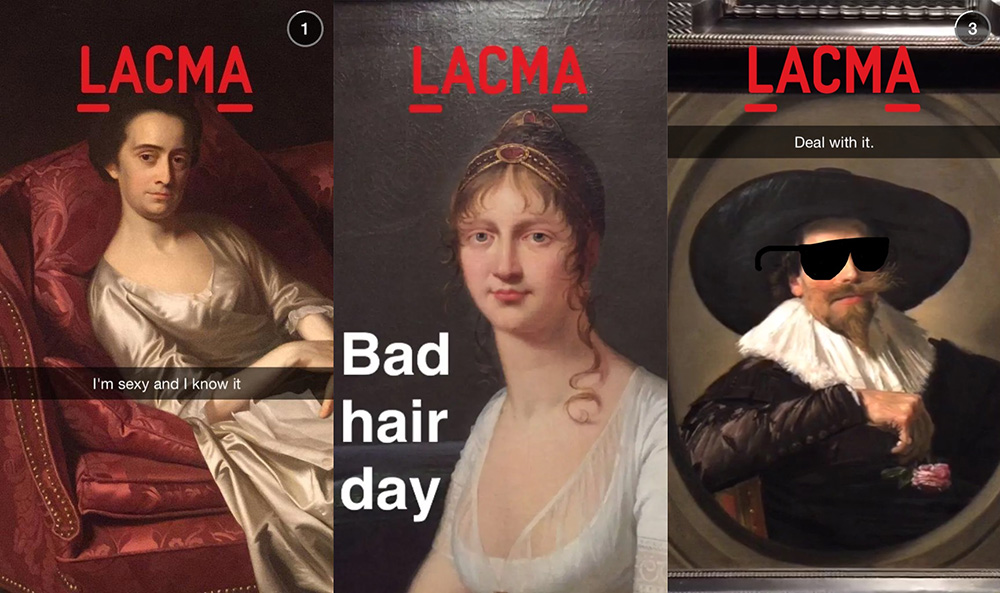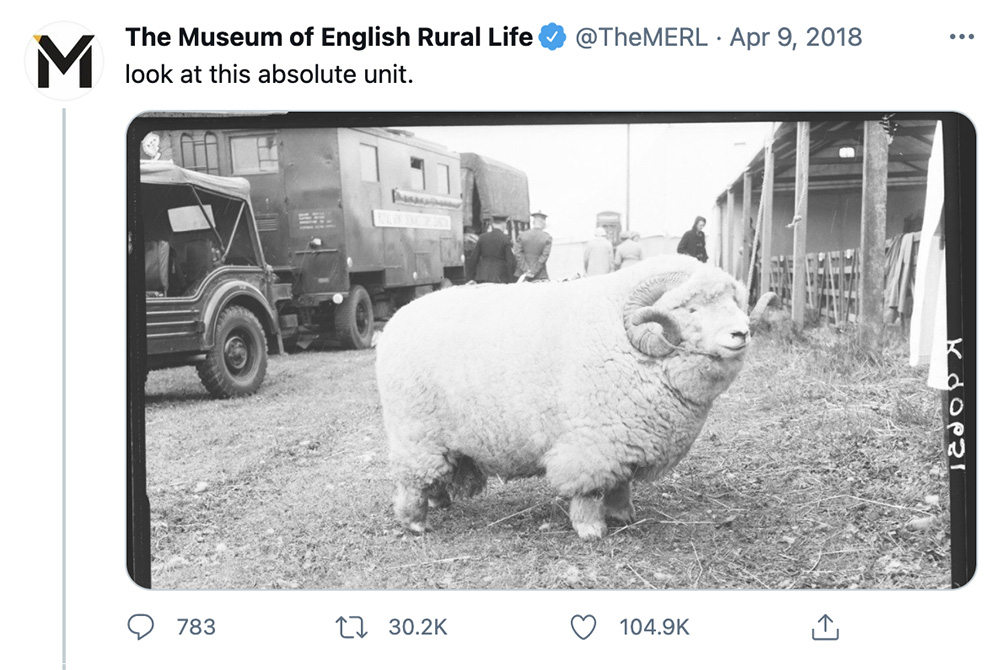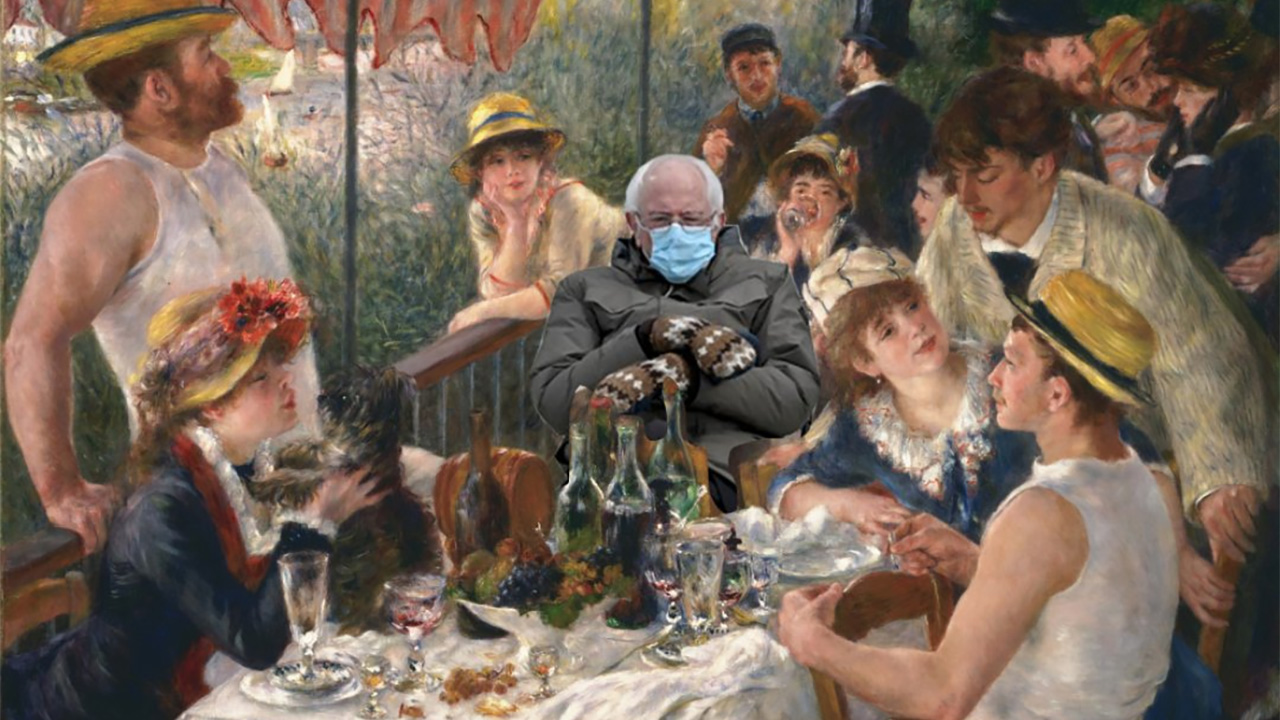After a year of seismic change for global cultural stakeholders, MuseumNext’s Digital Summit convened to assess how organizations pivoted and formed new strategies. The week-long event (February 22 to 26) welcomed more than 60 speakers to share experiences and learnings from 2020.
As the Digital Summit’s official media partner, Jing Culture & Commerce presents key findings from select sessions. Find more of our coverage here.

The Los Angeles County Museum of Art debuted on Snapchat in 2015 with a series of playful, viral memes. Image: LACMA on Snapchat
Session: “Social Media is People Media”
Host: Chris Cloud, Director of Communications and Marketing, Museum of Contemporary Art San Diego
For cultural organizations scrambling to launch TikTok accounts or keep up with a hectic post schedule on Instagram over the past year’s lockdown, Chris Cloud’s presentation must have offered somewhat of a sanity check. While enumerating best practices for social media, he emphasized quality over quantity, meeting target audiences where they are, and the importance of cultivating communities. “Don’t be [on every platform] all the time,” he says, and vitally, “You don’t have to post everyday.”
From channel to content, social media strategies should hinge on an understanding of audience data — where they congregate, what appeals to them — to build a like-minded community as opposed to a following. “Your content is not for you,” notes Cloud, “but the communities you’re trying to serve.” That means engaging in social listening and building authentic connections with your audience, whether through user-generated content or linking your content to what’s currently trending (read: memes). Social media, after all, should be a conversation.

The Museum of English Rural Life’s much-celebrated 2018 tweet linked its content to an existing meme (“absolute unit”), speaking directly to an online audience and generating enthusiastic social engagement. Image: The Museum of English Rural Life on Twitter
“The real work,” says Cloud, “begins after you post.” Liking posts and leaving comments where your organization is tagged or mentioned spark interactions with your audience and makes them feel valued. “A community that feels seen and heard can become your most loyal audience members and ambassadors,” he says. Follower numbers and likes do matter, he adds, but hardly cut it when measured against genuine engagement.
Key Quote: “You can buy impressions, but you have to earn a community.”
Pro Tip: Track and save audience interactions you’ve had on social media to better demonstrate across departments how these organic, authentic engagements are as valuable a metric as any.



